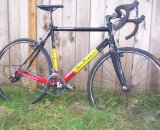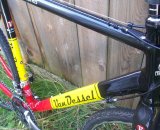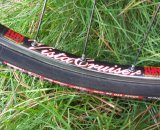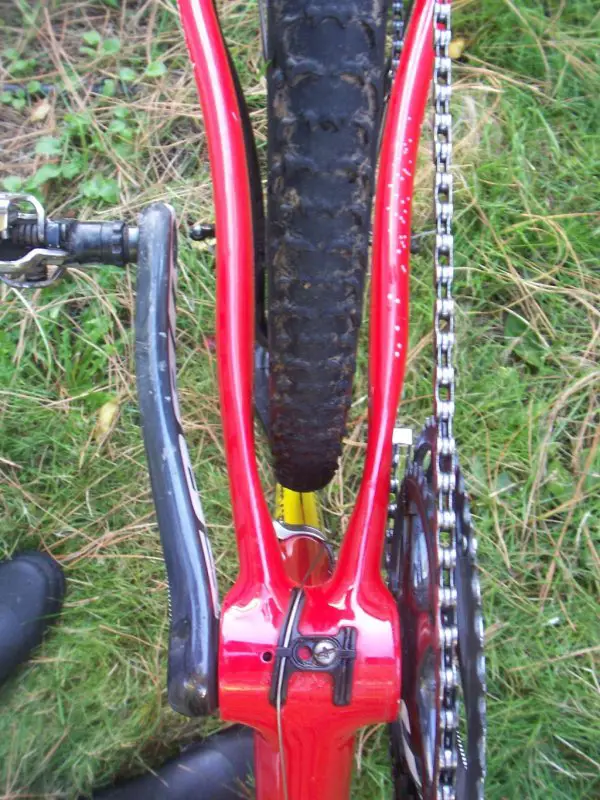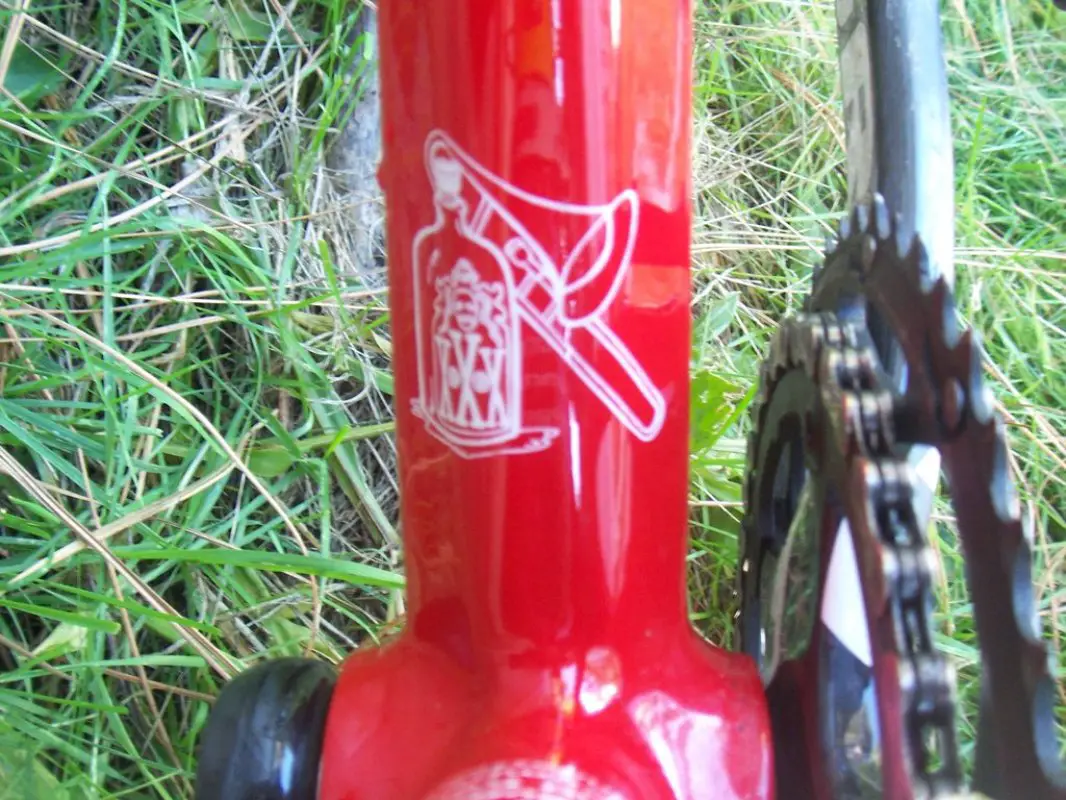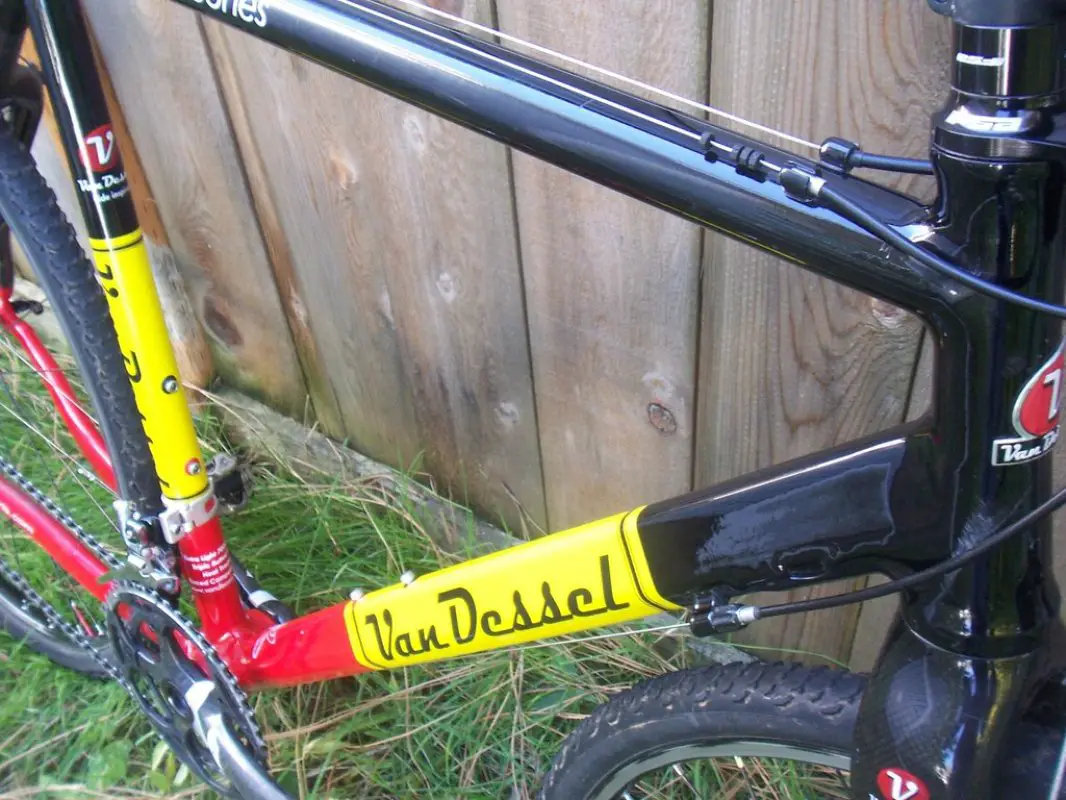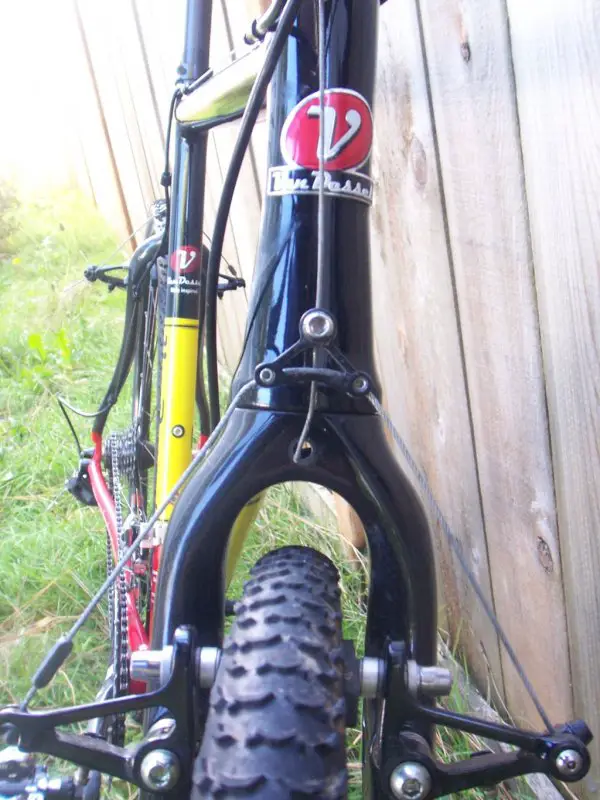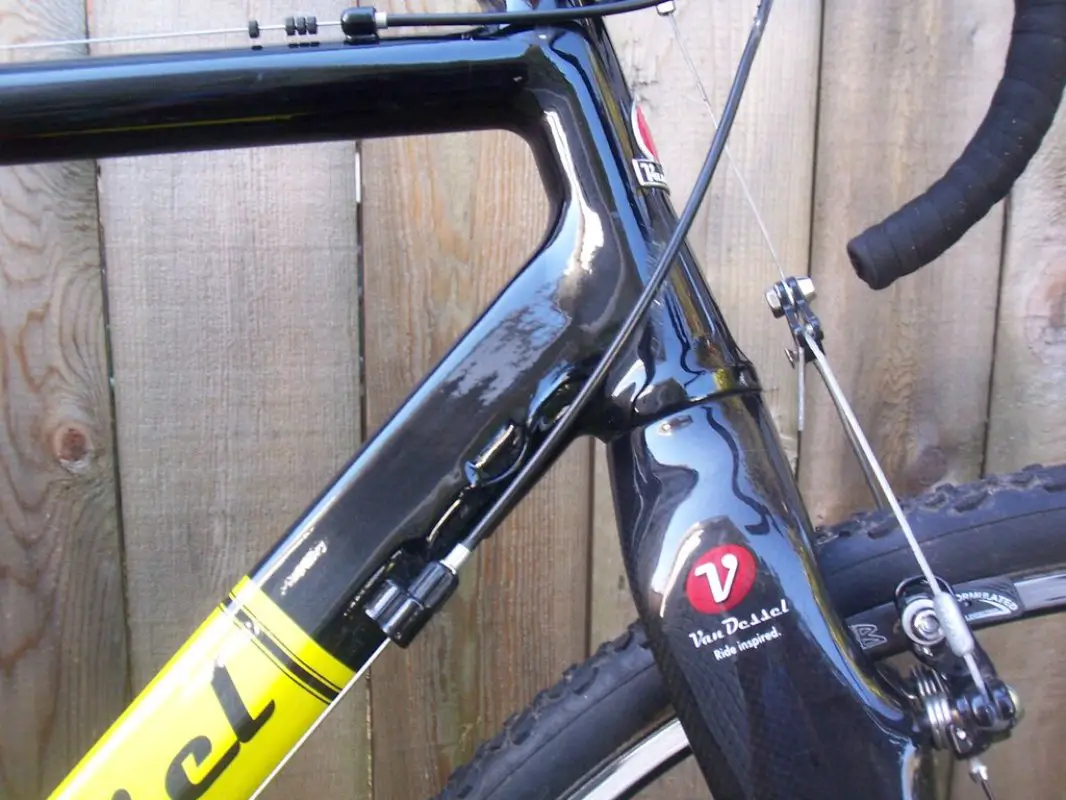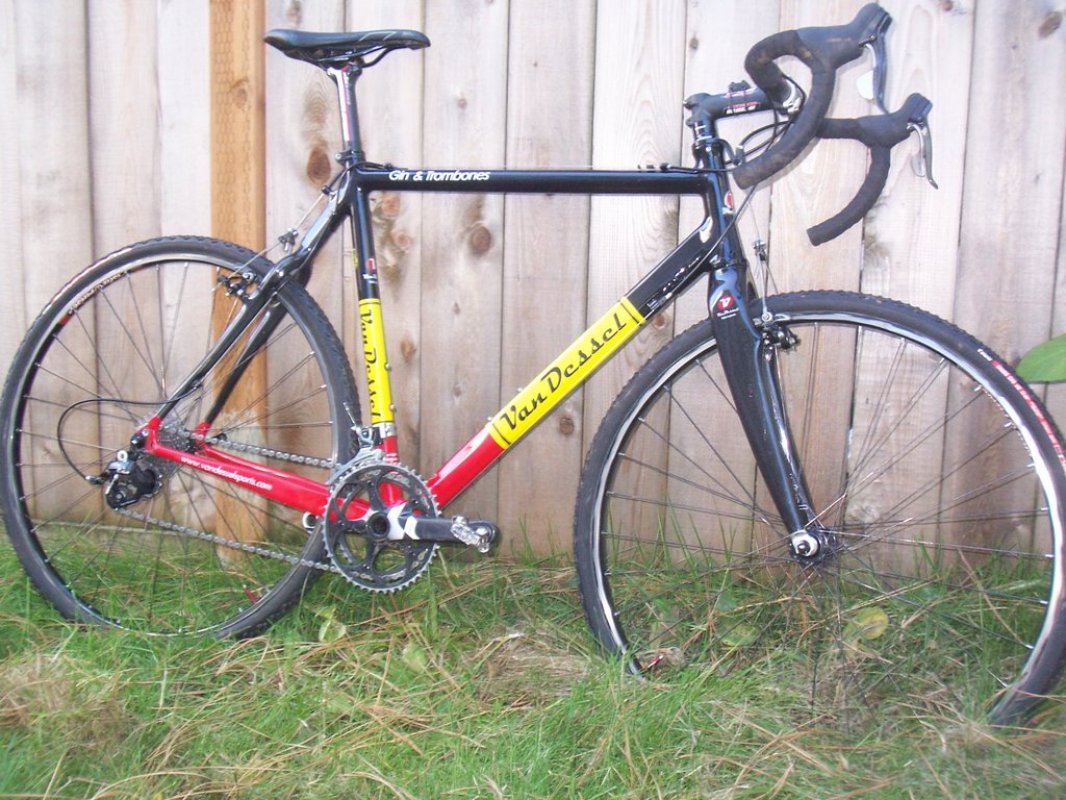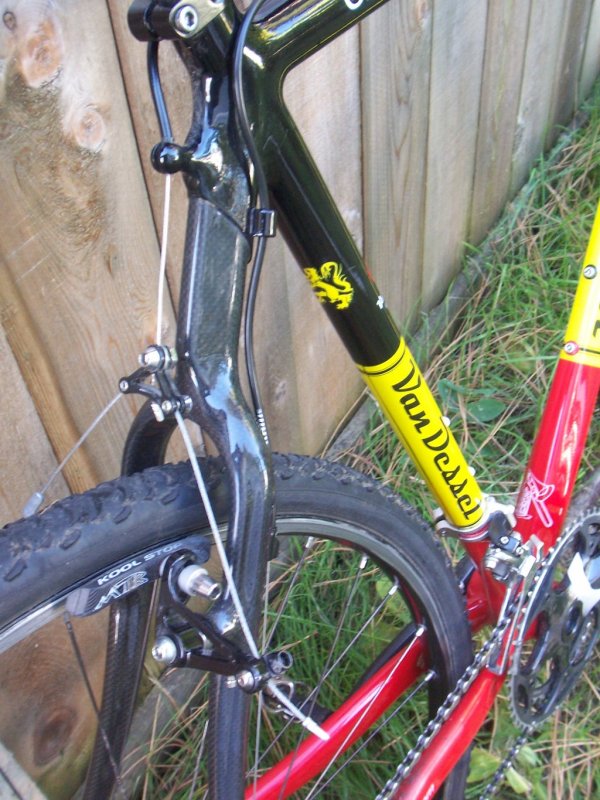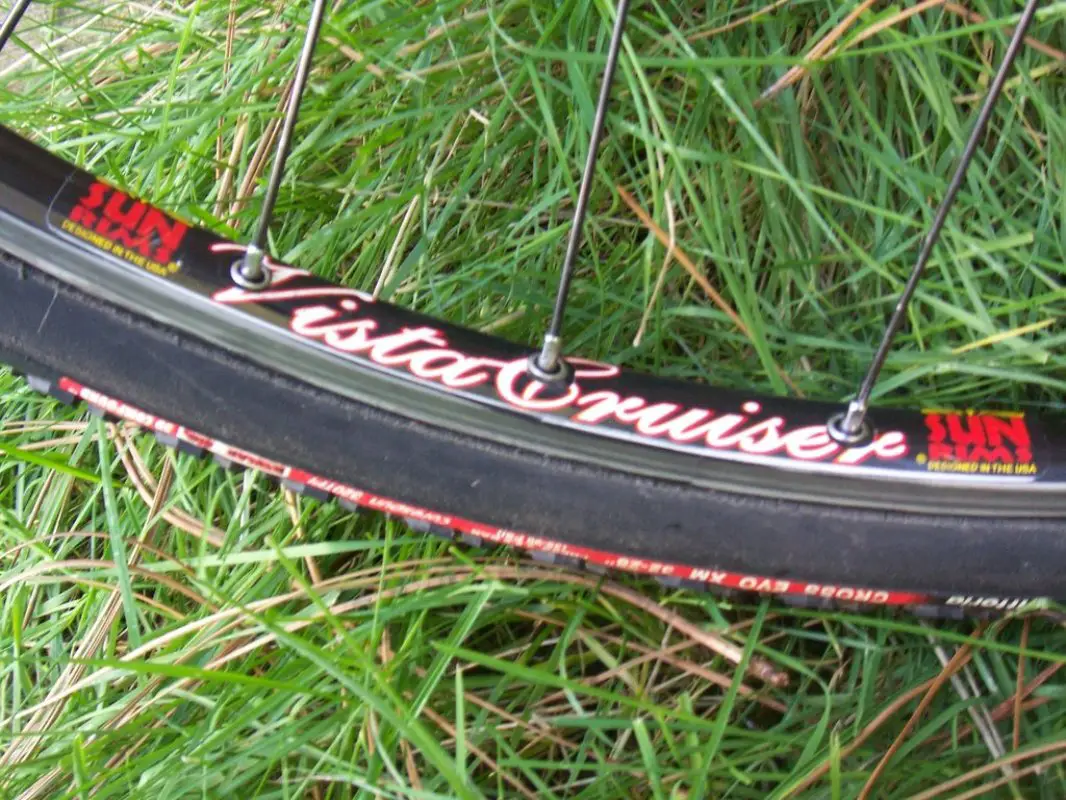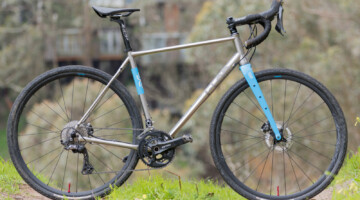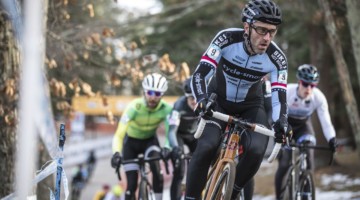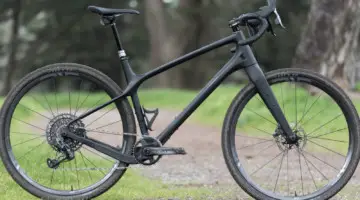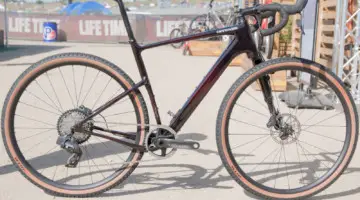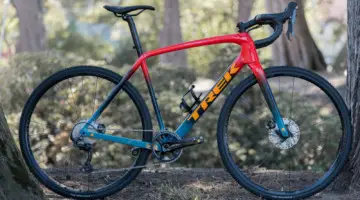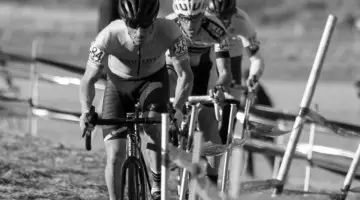Hopefully our first impressions of the Van Dessel Full Tilt Boogie got your juices flowing for these Belgium-inspired bikes, and you’ve been thirsting for more. Well, fear not, as CXM lacky Robbie Carver had the opportunity to take Van Dessel’s old stallion, the Gin and Trombones, out for more than a few tussles in the mud. [Editors note: As the popularity of ’cross grows, builders are sending us bikes as fast as they can ship them. The abundance not only points to the burgeoning of our favorite sport but also allows us to put some reviews online, while still bringing you a full range of bikes in each print issue.]
History:
When former pro racer Edwin Bull came to the US from Belgium, he may not have known that he would someday be building some of the top ’cross frames in the country. But, when he began Van Dessel Sports in 2000, he did know the formula he wanted to pursue: race inspired, race tested. Since then, the small New Jersey-based company has steadily grown, evidenced now by the release of their first full-carbon cyclocross steed, the Full Tilt Boogie. But while the Full Tilt certainly takes Van Dessel to a new level, it stands on the shoulders of a modern-day classic: the Gin and Trombones.
The Gin and Trombones has been Van Dessel’s flagship bike for many years, only this season being dethroned by the full carbon Full Tilt Boogie. Over the seasons, the frame has undergone many minor adjustments as pro racers such as Adam Myerson and Adam McGrath gave race-tested feedback. “We work with a lot of riders, and take their input very seriously,” said Edwin. “Adam Myerson had a lot to do with the original geometry and design, and it has just evolved from there. Geometry is mostly unchanged, but things such as the tapered headtube, tube shapes, etc. continue to be tweaked.” What we have today is a frame whose geometry has been fairly solidified over the past few seasons, with new additions – such as last year’s switch to BB30 – continuing to add improvements.
I was fortunate enough to get my hands on a 2010 model (the 2011 was still a few weeks out) and give it a few months around the hills and on the courses of Portland, Oregon. As high end ’cross rigs continue to go the way of full carbon, I wanted to see how this aluminum/carbon veteran stacked up.
The Gin and Trombones has a clean, Belgium-inspired paint job, with the solid red, yellow and black bands evoking the national flag. Small details, such as the Lion of Flanders on the seat tube and a gin and trombone decal nestled just above the bottom bracket give the frame a subtle intricacy. If the Belgium pride isn’t your bag, however, you’re out of luck: Van Dessel is no longer offering the bike in any other color scheme.
The main body of the frame is crafted from 7005 aluminum, with a slightly ovalized top tube and an oversized, teardrop-shaped down tube that feeds into a burly BB30 bottom bracket. “The system has been working really well for us,” said Bull about the move to BB30. “Light, stiff, great ankle clearance, we’ve been really happy with it – especially when comparing it to external bearing. My big thing personally is ankle clearance, I used to always rub the crank arms with my shoes – not anymore.”
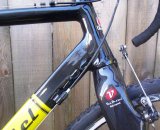
The new, beefier front fork, combined with the tapered head tube, solves earlier complaints of a soft front end.
A carbon seatstay slots, wishbone style, into the frame. The chainstays flange out wide, leaving ample room for mud clearance. Van Dessel listened to earlier complaints of a soft front-end, and now the headtube tapers to 1.5″, allowing for Van Dessel’s own stiff, beefy carbon fork. A thick gusset also reinforces the headtube, providing extra rigidity. Van Dessel lists a 54cm frame at 1450 grams, and an uncut fork at 480.
For the 2011 model, Van Dessel took Adam Myerson’s habit of drilling out cable stops into its own hands, and now the rear derailleur cable housing runs uninterrupted from the top tube all the way down to the derailleur, further protecting shifting from the elements.
The major change to the frame comes in the style of welding Van Dessel chose. While previous models – my test frame included – had smooth, molded-looking welds, new models have the bumpier, classic exposed TIG welding. When I asked Edwin about the change, he told me that switching to TIG welds shaved a hundred grams off the frame weight without losing any structural integrity. While I’ll miss the carbon-like transitions between the tubes, it’s hard to argue with that kind of weight saving.
The geometry on the Gin and Trombones is fairly aggressive. My 58cm test bike has an effective top tube of 57.5cm, a 56cm seat tube and 42.5cm chainstays. A 74-degree seat angle puts the rider further over the pedals than more ‘relaxed’ rides. A 103.3 cm wheelbase suggests road-tight geometry, and Van Dessel also ascribes to the low school of thought with BB height, as the bottom bracket rests a gravity-dropping 7cm below the wheel axles.
The Build:
Van Dessel has long been known for allowing its customers a high degree of flexibility when it comes to components. This practice continues today. Buyers can outfit the Gin and Trombones in builds from all three major component manufacturers, and from within those choose the level of quality they desire – from the $7,999 Shimano Di2 build, down to the $2,599 Shimano 105. If you already have some parts hanging around, frame and fork sell for $1,149.
The test bike came with the ‘Force Build’, with an MSRP of $3,299 ($2,699 for Apex). While my ride had a few swap-outs (a Rival rear derailleur, a slick FSA K-Force seatpost instead of the SLK, and a set of Tektro brakes instead of the new, yellow TRP EuroX), the standard build includes SRAM Force shifters, derailleurs and cranks (172.5 on mine), FSA Energy bars and OS190 stem, and a Shimano 105 cassette. Frame, fork, and build weighed in at 5330 grams, minus wheels and pedals.
One other difference between my build and the standard – and one of my few qualms about the build – is that the test bike shipped with a 38/48 front chainring, as opposed to the marketed 36/46. While I’m a strong rider, I’m no pro, and I generally found the 48 to be too stiff for most of the ’cross courses I competed on.
Shipping with all new SRAM and Shimano builds this year are a set of burly SUNRinglé Cruiser Vista tubular wheels with Vittoria Cross Evo XM tires. It’s an interesting strategy, considering many people who can afford a 2,000+ dollar bike already have a better set of tubulars, and those who don’t may want to invest in something lighter, but then again a second (or third) set allows further customization for the varying terrain we find in ’cross – letting racers diversify their tire selection without losing the benefits of low pressure or having to sacrifice road wheels for the job. Regardless, upon request, Van Dessel will swap out the tubulars for a set of Shimano RS20s with Hutchinson Bulldogs. “We ship them with inner tubes,” Edwin told me, “but the idea is that people will use tape, rim strip and sealant to run them tubeless.”
The Ride:
I am, generally speaking, a road racer. On the ’cross course, I can destroy the open sections on my trusty Redline Conquest, but usually bobble and bounce and bite on the technical bits. So when I first saddled up the Gin and Trombones and took it for a ride down the steep singletrack behind my house, I was surprised at how well I handled the tricky terrain. Like a horse heading to the barn, the bike seemed to know where to go with only the slightest encouragement from me, and I trusted it completely. The bike was quick to accelerate out of turns, responsive in slow technical sections and steered well from both my hands and my hips.
The lower bottom bracket did cause a few bumps and bangs, especially when pedaling uphill on single-track, but I have yet to bottom out on the ’cross course, and the extra stability is well worth the trade. I also experienced significant fork chatter, initially, but with a bit of time tinkering with the Tektro brakes, this became a non-issue without having to resort to the fork’s brake bolt piercing.
The Vittoria Cross Evo tires were a decent choice, as they grabbed reasonably well in most conditions and handled the mud better than I had anticipated. The Vista Rims took a nice beating – both eventually came out of true – but proved solid, if not terribly light.
And that roadie power I was talking about? The aluminum frame and oversized bottom bracket, combined with the stiffer front end, make for a bike whose primary desire is to go forward. I hesitate to call a 58cm ’cross bike ‘punchy,’ but that’s exactly the word which comes to mind.
I had the opportunity to take the Gin and Trombones on a three-day bike camping excursion along the forest roads and single-tracks circumnavigating Mt. Hood [See our article on this trip in our upcoming print issue]. Each day saw six to eight hours on harsh, unmaintained rock-strewn forest roads and technical, not-meant-for-cross-bikes single track. My two riding partners – both on full aluminum frames – complained of aching backs and sore butts. While I certainly felt fatigued from such long days in the saddle, I did not feel nearly the discomfort they did. Although no one would buy this bike with such a trip in mind, the experience speaks to how well the carbon seat stays absorbed the smaller bumps and bounces.
The trip also brought up a minor plus: the Gin and Trombones, unlike Van Dessel’s newest model, the Full Tilt Boogie, has mounts for two water-bottle cages. I appreciated this detail, as it kept that water weight off my back, and has been useful for longer training rides.
The bike handles well on course transitions—the single cable along the down tube is flush with the bike and I have yet to get caught on it, and the ovalized top tube gives a nice grip. One minor gripe I do have is that the top tube makes no concessions to the shoulder mount, and on long runs – such as the never-ending beach runs at the Rad Racing GP – I had some minor discomfort. But the tubing is plenty wide, and this could be a matter of my particular build.
Living in the Northwest, mud clearance is of particular concern to me. I took the Gin and Trombones to the Rainier Cross Crusade – a muddy, sloppy course so boggy that many resorted to running long sections at a time. And while the shifting ultimately failed due to my cassette turning into one solid block of mud, I never had any issues with clearance at any of the usual trouble spots. The wide chainstays, even though caked thick with mud, still offered plenty of clearance.
The Verdict:
The Gin and Trombones is a stiff, responsive, race-tested bike designed to maximize forward momentum. The bike doesn’t take risks – it’s not the lightest, the lowest or the fanciest rig out there – but every design element has been run through the lab of professional cyclocross, and it shows.
At $2,600 for the cheapest build, it’s clear that the Gin and Trombones is a bike targeted for serious racers willing to pay for serious performance. And while there’s no question that this is a serious bike – with many wins to its name – the increasingly abundant full-carbon ’cross frames may prove more attractive for buyers with a few extra dollars. Will the new Full Tilt Boogie overshadow his older brother, or can the aluminum frame still hold its own? Time will tell.
Psyched:
- Power pushers
- Mud sloshers
- Back savers
Bummed:
- Full carbon lovers
- Belgium color-haters
- Shallow pocket weekend warriors
Gin and Trombones:
MSRP: $1149 Frame/Fork/Headset; $3299 Force Build (Tested)
Weight: Frame 1450g (Posted, 54cm); 5330g weighed (58cm, No wheels or pedals)
Build: 2010 SRAM Force, SunRingle Cruiser Vista Tubular wheelset, Vittoria Cross Evo XM Tires
Country: USA (With a bit of Belgium flair)
Photo Gallery:













